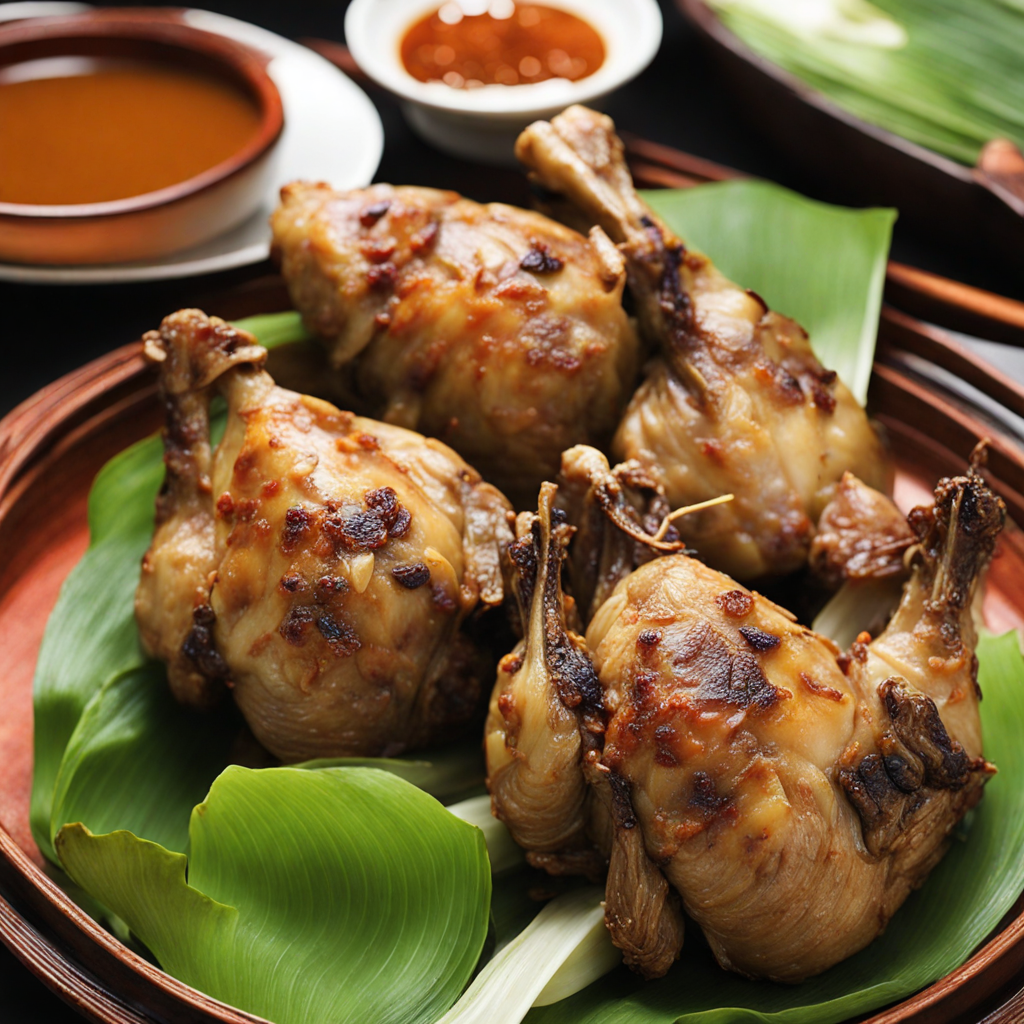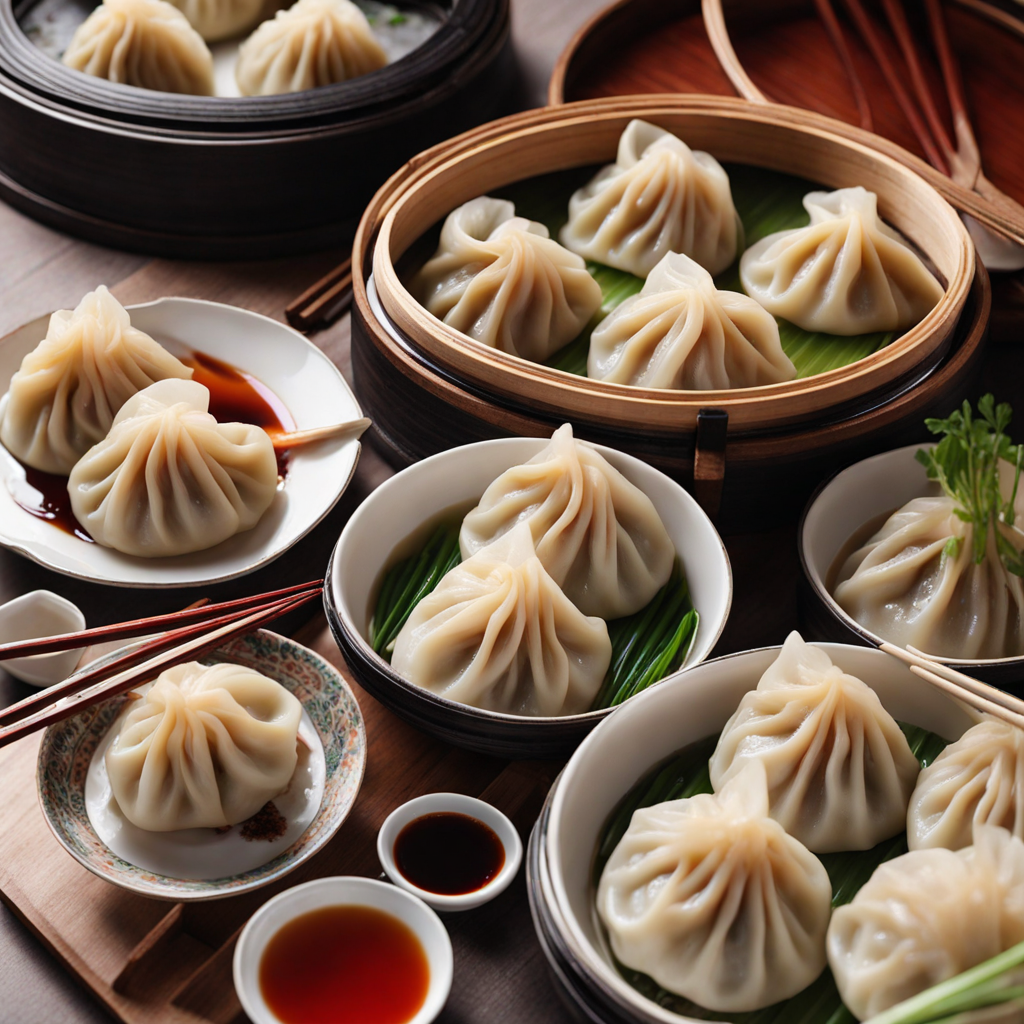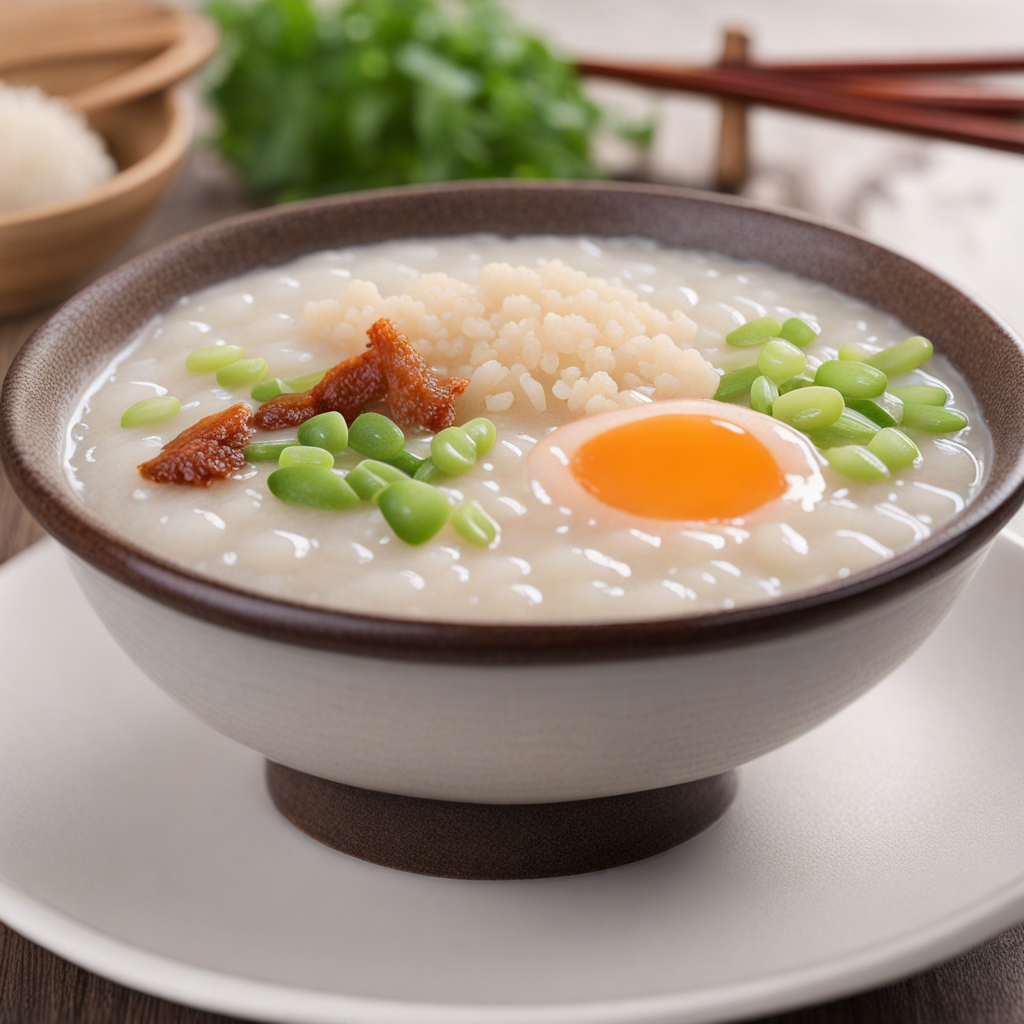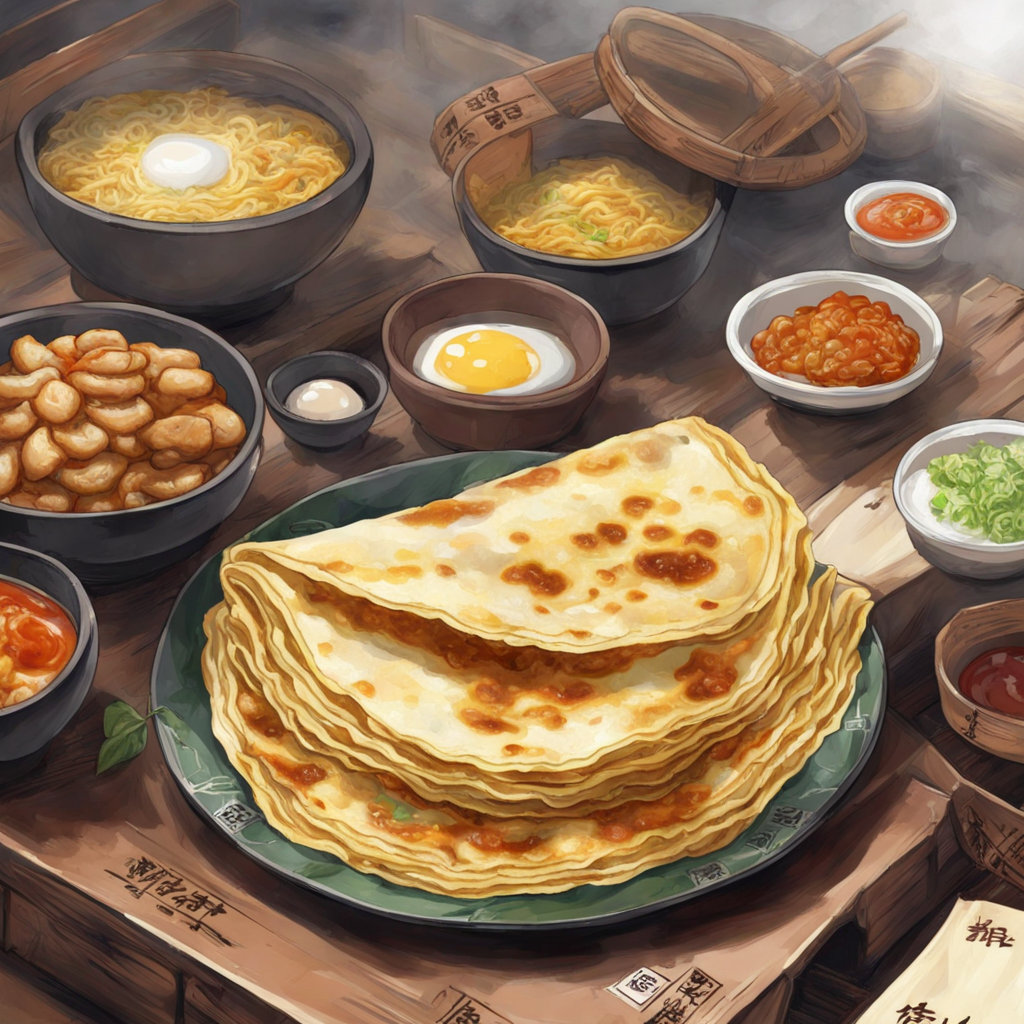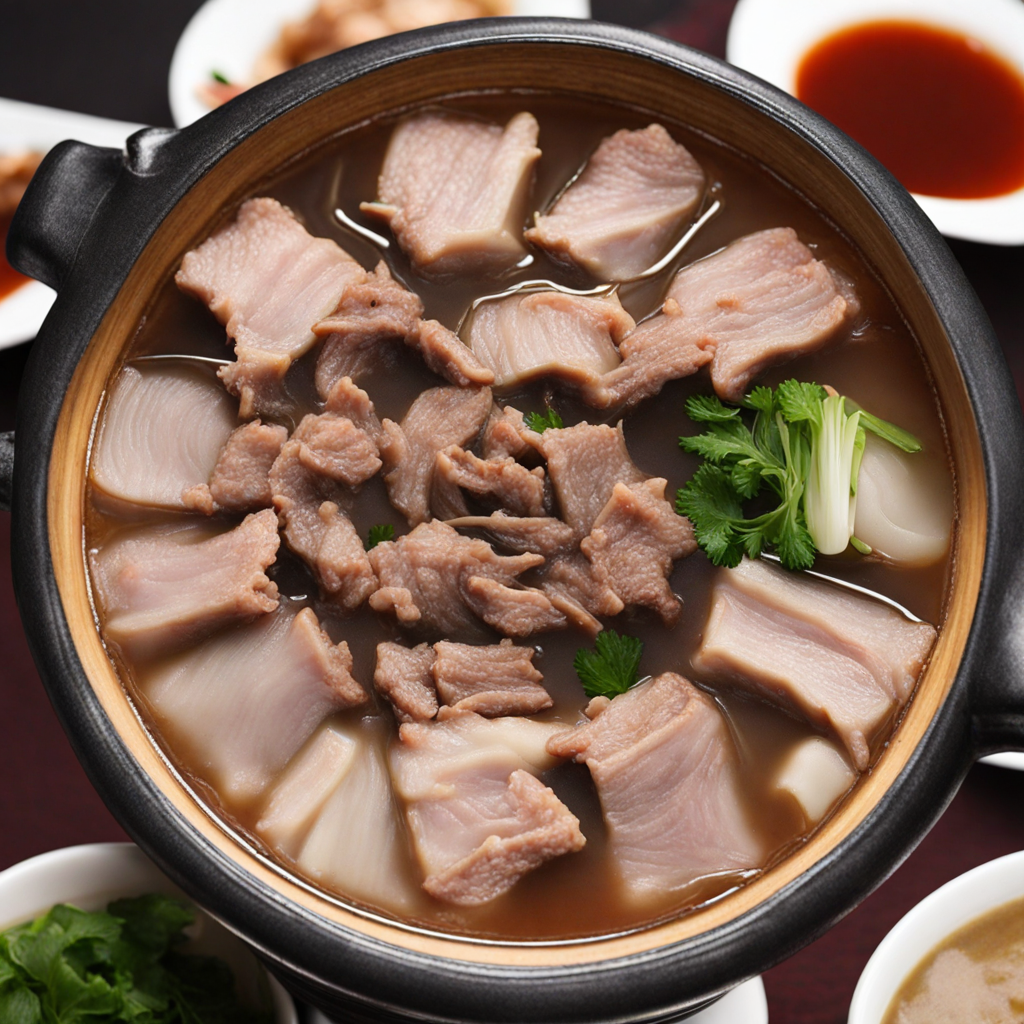Beggar's Chicken
Beggar's Chicken is a traditional Chinese dish that offers a unique blend of flavors and textures, encapsulating the essence of rustic Chinese cuisine. The preparation begins with a whole chicken, marinated in a mix of aromatic spices, soy sauce, and often a touch of wine. The marinating process allows the flavors to seep deep into the meat, ensuring that every bite is bursting with savory goodness. After marination, the chicken is wrapped in lotus leaves to infuse it with a delicate fragrance, and then encased in a thick layer of clay or dough, which helps to trap moisture during cooking. Once the chicken is sealed, it is traditionally cooked over an open flame or buried in hot coals, allowing the meat to steam in its own juices. This method not only ensures the chicken remains tender and juicy, but also imparts a smoky flavor that elevates the dish to new heights. When the clay is cracked open, the aroma that wafts out is simply irresistible, revealing the beautifully cooked chicken nestled within the lotus leaves, its skin glistening and succulent. Serving Beggar's Chicken is as much about the presentation as it is about the taste. The dish is often accompanied by steamed rice and seasonal vegetables, allowing diners to savor the full spectrum of flavors. The tender chicken, infused with the fragrant notes from the lotus leaves and the rich marinade, is a sensory delight. Each bite offers a complex interplay of savory, smoky, and subtly sweet flavors, making Beggar's Chicken a must-try for anyone looking to explore the depth of Chinese culinary traditions.
How It Became This Dish
The Story of 叫化鸡 (Jiao Hua Ji): A Culinary Treasure from China #### Origins 叫化鸡, pronounced "Jiao Hua Ji," translates to "Beggar's Chicken" in English, and it encapsulates not only a unique cooking technique but also a rich tapestry of folklore and culinary tradition from China. Its origins trace back to the southern regions, particularly Hangzhou in Zhejiang Province, during the Qing Dynasty (1644–1912). The dish is steeped in legend, with various tales explaining its inception. One of the most popular stories involves a beggar who, desperate for a meal, stole a chicken. To avoid being caught, he buried the chicken in mud and cooked it over an open fire. The mud sealed in the flavors and moisture, leading to a tender and aromatic dish. This tale highlights the resourcefulness of those in dire situations, transforming a simple chicken into a delicacy born from necessity. Another version tells of a traveling scholar, who, after a long journey, found himself hungry and without money. He crafted a makeshift oven using clay and mud, baked the chicken, and discovered that the flavors were enhanced by this unique cooking method. The combination of rusticity and creativity imbued the dish with a sense of adventure and survival, resonating with the common people. #### Cultural Significance Jiao Hua Ji is more than just a dish; it represents a connection to traditional Chinese values of humility, resourcefulness, and the art of cooking. As with many traditional foods, Jiao Hua Ji is often prepared for special occasions and family gatherings, symbolizing reunion and shared joy. In Chinese culture, food is a means of connection—both to each other and to history. The dish also embodies the essence of regional Chinese cuisine, which emphasizes local ingredients and cooking methods. The use of clay or mud to encase the chicken not only enhances the flavor but also showcases the ingenuity of traditional cooking practices. This technique reflects the broader Chinese culinary philosophy of utilizing natural elements to create depth and complexity in flavors. #### Development Over Time As time progressed, Jiao Hua Ji evolved from its humble beginnings into a cherished dish in Chinese cuisine. Initially, it was a street food enjoyed by the impoverished, but its popularity soon burgeoned, attracting the attention of the elite. The dish became a staple in restaurants and was often served at banquets, showcasing the transformation of a beggar's meal into a gourmet experience. In the early 20th century, Jiao Hua Ji began to spread beyond its regional roots. Chinese immigrants, seeking better lives abroad, brought their culinary traditions with them. As a result, Jiao Hua Ji found its way into Chinese communities around the world, adapting to local tastes and ingredients while preserving its core elements. By the mid-20th century, Jiao Hua Ji was firmly established in both traditional and modern Chinese cuisine. Chefs began experimenting with various flavor profiles, incorporating spices and herbs that were not traditionally used. This innovation led to a fusion of flavors, making the dish appealing to a broader audience. In contemporary culinary circles, Jiao Hua Ji has seen a resurgence due to the growing interest in authentic, regional Chinese dishes. Chefs are returning to traditional cooking methods, emphasizing the cultural narratives behind the food. The dish is often featured in high-end restaurants, where chefs meticulously recreate the original techniques while adding their own creative flair. #### Modern Interpretations Today, Jiao Hua Ji is not limited to its original form. While the traditional preparation involves wrapping the chicken in clay or mud, modern chefs have adapted the technique to suit contemporary kitchens. For example, some may use parchment paper or foil to achieve similar results without the need for extensive preparation of mud. The flavor profile has also expanded, with variations that incorporate different types of chicken, marinades, and cooking styles. Some chefs infuse the chicken with local herbs or spices, creating a unique twist that reflects the region's culinary landscape. Despite these innovations, the essence of Jiao Hua Ji remains intact—a celebration of resourcefulness and the joy of sharing a meal. In addition to its culinary adaptations, Jiao Hua Ji has also found its place in popular culture. It has been featured in cooking shows, food blogs, and social media platforms, where food enthusiasts share their interpretations of the dish. This visibility has contributed to a growing appreciation for traditional Chinese cuisine and its historical narratives. #### Conclusion Jiao Hua Ji stands as a testament to the resilience and creativity of the human spirit. From its origins as a beggar’s meal to a celebrated dish on restaurant menus worldwide, it embodies the rich history and cultural significance of Chinese cuisine. This dish is a reminder of the power of food to transcend social boundaries, connecting people through shared experiences and stories. As we savor Jiao Hua Ji, we not only enjoy a flavorful dish but also partake in a narrative that spans centuries—one that speaks to the heart of Chinese culinary tradition. In every bite, we taste the history, the culture, and the enduring spirit of those who came before us, ensuring that the legacy of Jiao Hua Ji will continue to thrive for generations to come.
You may like
Discover local flavors from China


